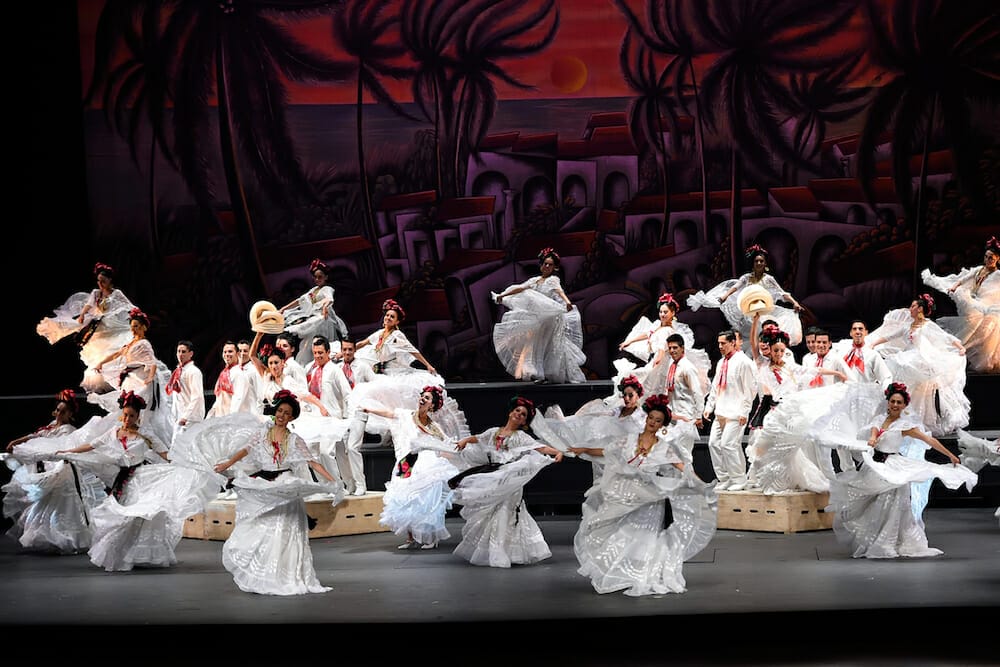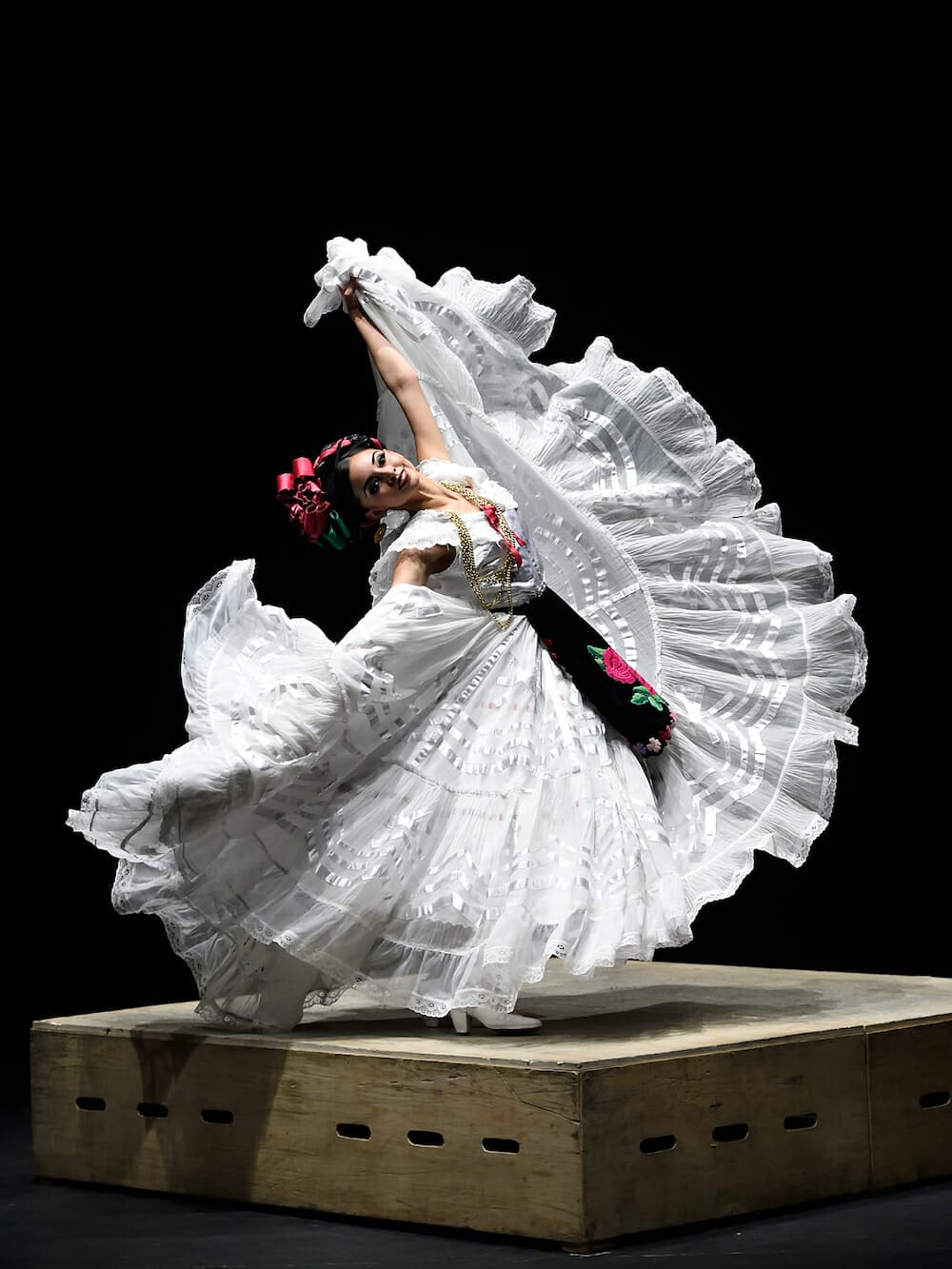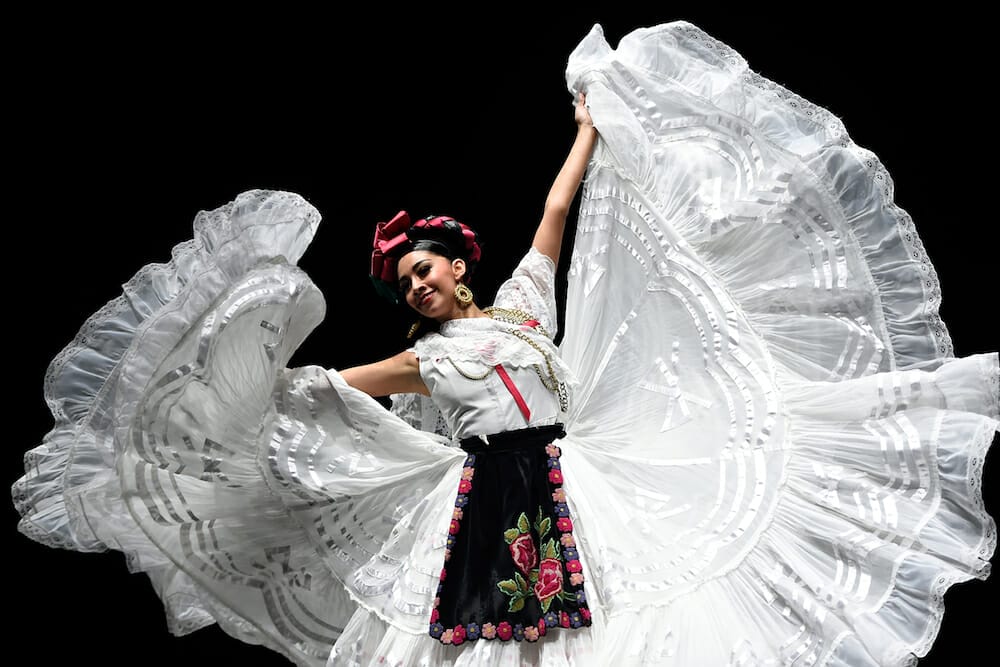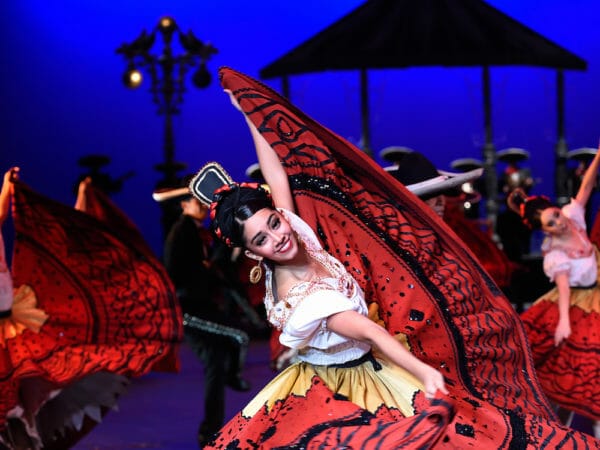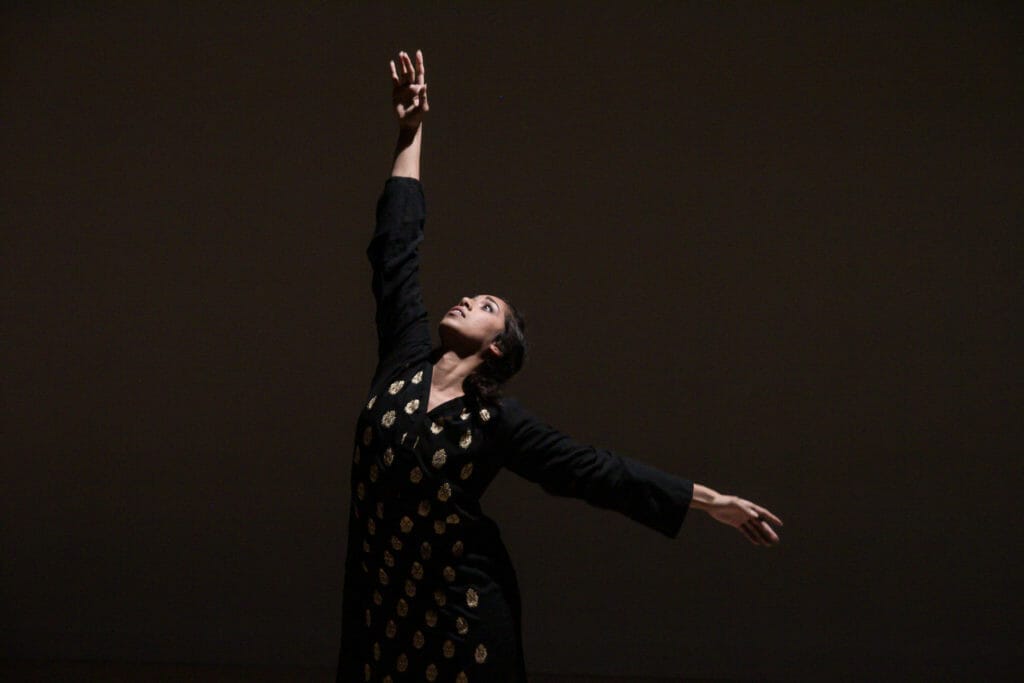The evening begins the minute the entrance ticket is scanned. As expected the majority of the crowd is Spanish speaking. What is unexpected but much to our delight is the the availability of Mexican cuisine and beverages. We see a couple sharing a sizeable serving of chips and guacamole, tamales being delicately unwrapped with a sense of urgency, a Modelo in hand and even a glass of Mezcal. Salud!
Amalia Hernández’s Ballet Folklórico de México
Ballet Folklórico de México was established in the 1950s by the late Amalia Hernández. After her passing the company was turned over to her daughters, Norma López Hernández and Amalia Viviana Basante Hernández and grandson, Salvador López López. Her vision was to preserve the dance traditions and cultural celebrations of Mexico and to share this with audiences around the world. And that is exactly what this evening entails.
As this writer is not Spanish speaking nor very familiar with Mexico’s history, she reads over the program notes multiple times. We are here tonight to see a dance performance broken up into 10 parts-- wow, that sounds like a lot! As the overture of a live mariachi plays, we settle into our seats preparing for an evening we will never forget.
The Great Tenochtitlán
The curtains open to a blood red backdrop. Dancers fill the entire upstage dressed as the Aztecs: bare feet, ankle bells, long tunics and ornate headdresses. We are introduced to the story of of how the city came to be. According to Aztec folklore, the city was built due to a sign received from the Gods-- an eagle ravaging a serpent. A quick change of costumes, the male dancers are dressed as eagles and the females as serpents. The dancers intertwine in complex formations. The movement is traditional but also layered with a touch of contemporary styles. The presentation is ceremonious in nature reminding us the significance and birth of the ancient city of Tenochtitlán.
Revolution
This portion of the evening is dedicated to the women of the Revolution, soldaderas. Strapped with bandoliers and brandishing rifles the female dancers dressed in bright purples, greens and magentas march across the stage eating up the space. The image of the lined up is still etched in our memories. The audience whoops and cheers for the women. There is no invitation needed to express their pride. A short section, but nonetheless powerful.
Charreada
The live mariachi band makes its appearance again in this section accompanied by the charro (horseman). Jarabe, a traditional mariachi song plays as the charro effortlessly whips his lasso. He swings it above his head and low to the floor, jumping through it. It amazes us that he does not get tangled! Couples of dancers join him on the stage and a romantic group dance ensues. The twirling skirts of the females and heavy stops from their males partner are a colorful whirlwind of energy!
Jalisco Festivity
The most memorable and final portion of the evening is the Jalisco Festivity. The mariachi band is the first to close of the evening. Each musician is showcased. The Mexican harp plays a mind-blowingly complex tune as his fingers whiz across the strings. The deep voice of the lead singer fills the hall. The passion behind his voice causes shivers to trickle down our spines. The dancers are welcomed onto the stage as they perform dances of Jalisco most notably the famous Mexican Hat Dance. Their energy is contagious, even some of the audience members stand up to dance at their seats. The dancers make their way into the audience and dance with some of its members. The evenings ends as the dancers throw streamers into the audience shouting, “Viva México!” and the audience yells back!
There is no doubt that we all were collectively moved and thrilled by Ballet Folklórico de México’s performance. This was indeed a vibrant crash course of Mexico’s history told through dance and music. There was a sense of community from beginning to end. However there was no invitation needed for the audience to cheer, whoop and clap mid performance. And when the dancers and musicians came out to the audience it was natural and exciting at once.
Thinking back to when we first read the program note summaries for the ten sections, we wish there were ten more!
Visit Auditorium Theatre for information about upcoming performances.
For more information on Ballet Folklórico de México and upcoming performances bookmark their website.
Photos courtesy of Auditorium Theatre
Learn more about dance by seeing dance through dancers eyes in the Picture This Post series, “Choreographers’ Eyes - Dancers Explain Dance”. Watch this video preview of the story here—
Find more Picture This Post dance reviews in the latest roundup — CHOREOGRAPHERS WE LOVE. Also, watch a short preview video here —
Tuli Bera is a performance artist based in Chicago. She received her BFA from the University of Illinois, Urbana-Champaign. She currently dances with Project Ishti led by Preeti Veerlapati and Kinnari Vora. Most recently she danced in their new work, "Prakriti" which premiered at the 2017 Chicago Fringe Festival. Bera works as Aerial Dance Chicago's program coordinator and is also the director of J e l l o Performance Series housed by Links Hall and Elastic Arts. This is an artistic platform that provides opportunities for Chicago artists to show their work. For more information about The Series Website.

